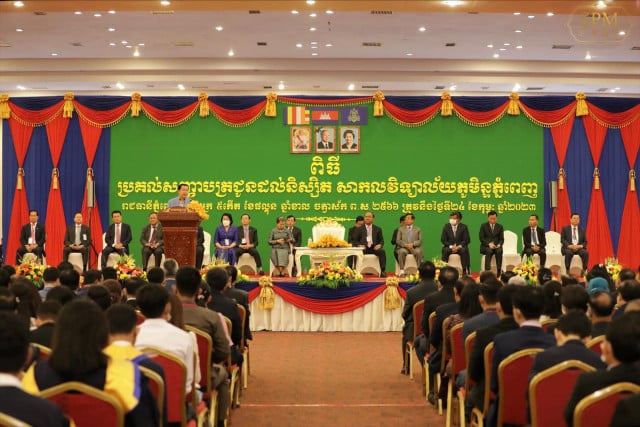Heavy Rain Leads to Heated Debates at Café and on Facebook

- Cambodianess
- August 8, 2020 6:33 AM
Floods, which usually occur after heavy rainfalls in some parts of the capital city of Phnom Penh, trigger many angry complaints from residents. Samnang and Sothie have seen these complaints voiced on their social media newsfeed, at their usual sidewalk café as well as in their local communities. The question is why some parts of Phnom Penh still experience disruptive flooding during and after heavy rainfalls.
Sothie: Eh, Samnang! How was your trip back home on Aug. 6?
Samnang: It took me more than two hours to get home! Some of the roads were completely covered with rainwater and blocked by heavy traffic. By the time I got home, the ground floor was, once again, flooded since the street was raised and is now higher than my ground floor.
Sothie: I have seen storm sewage system being built along the streets. But, why are there still floods?
Samnang: I have also seen this. There are several factors that lead to this kind of occurrence. Perhap, the rainfalls were very heavy, the sewage pipes could not handle excessive flow of water or the pump stations could not pump out the water efficiently enough due to blockage caused by trash floating in the flood water. And…
Sothie: And… What? What other factors, Samnang?
Samnang: As you have heard from specialists, Phnom Penh is geographically shaped like a frying pan with the center being lower and the edges higher. Regarding the edges, Phnom Penh is surrounded by dams with roads on top. So, during heavy rains, the process of pumping the water at the dams and direct it to the lakes or water reservoirs presents a challenge. An architectural specialist once told me that the accumulation of concrete on many of the city roads can also engender flood intensity. In past decades, many streets in Phnom Penh were covered with plain dirt. This made it easier for flood water to be absorbed.
Sothie: So, the flooding has nothing to do with the demolition or the reclamation of water reservoirs in Phnom Penh?
Samnang: Your question is quite hard for me to answer. I am not a specialist in that field.
Sothie: Alright! I know that you are not a specialist. However, based on your own observations, does the reclamation of Phnom Penh water reservoirs somehow contribute to the flooding?
Samnang: Well, I can say that it is not entirely caused by the reclamation of those water reservoirs. Long ago, several lakes and other bodies of water in Phnom Penh were reclaimed for development. Boeng Keng Kang, Boeng Kak and even Boeng Trabek (boeng meaning lake in Khmer) were reclaimed. Developments do bring in some issues. Even though this is the case, people also benefit from those developments. The duration and intensity of floods in Phnom Penh have greatly improved compared to 10 years ago. This is due to the improved sewage systems as well as bigger water-pumping capacity to pump floodwater out of the city. Another thing to mention is that Thailand, our neighboring country, and some European countries also experience floods during and after heavy rains.
Sothie: So, what you are saying is that I have to cope with the situation.
Samnang: Sothie, this is reality, this is life. In this world, nothing is perfect: Sometimes, we just need to deal with it.
Sothie: Come on, Samnang! I do share your concern over flooded streets and your flooded house. But I asked you about floods in Phnom Penh and now you’re lecturing me about life…















